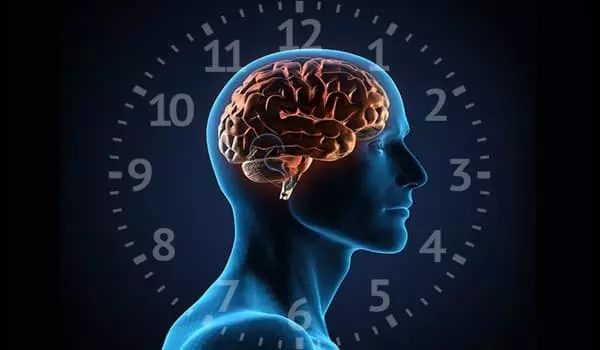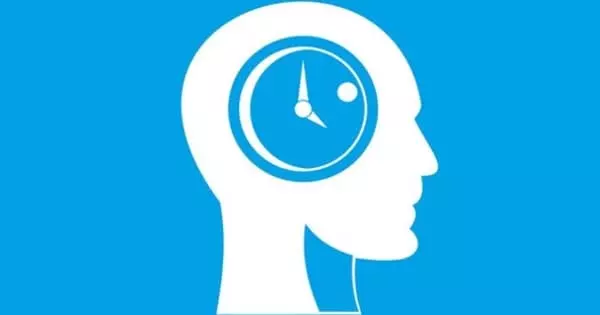Most lifeforms, including humans, must coordinate their behaviors and internal clocks as the earth spins on its axis in order to adapt to the resulting oscillations in light and temperature. Disease results from a failure to adapt to these daily rhythms. Northwestern University researchers discovered a new gene and molecular pathway that regulates the excitability of neural pacemaker cells in the brain by studying the fruit fly. Understanding how this pathway works can provide insights into daily behavioral rhythms and lead to new treatments for clock-related human diseases such as depression and insomnia.
Tango10, a new gene discovered by a team of neurobiologists, is essential for daily behavioral rhythms. This gene participates in a molecular pathway in which the core circadian clock (the ‘gears’) controls the clock’s cellular output (the ‘hands’) to regulate daily sleep-wake cycles. While the fruit fly Drosophila melanogaster was used in the study, the findings have implications for humans and clock-related problems and disease.
Life is organized around a 24-hour clock. The circadian clock, which is found in almost every organ, tissue, and cell type, is central to this regular rhythm. When a clock malfunctions, it can cause sleep disruption or a variety of diseases.
A recent discovery at Northwestern University may aid in understanding how this clock is linked to daily cycles. Tango10, a new gene discovered by a team of neurobiologists, is essential for daily behavioral rhythms. This gene participates in a molecular pathway in which the core circadian clock (the “gears”) controls the clock’s cellular output (the “hands”) to regulate daily sleep-wake cycles.
We wanted to better understand the molecular underpinnings of the daily ‘wake-up signal,’ which alerts an animal that it is time to wake up. We focused on pacemaker neurons that control the sleep-wake cycle in this study, and we used genetic screening to identify genes that regulate the neurons.
Dr. Ravi Allada
Despite the fact that the study was conducted on the fruit fly Drosophila melanogaster, the findings have implications for humans. Understanding how this pathway works could lead to therapeutics for sleep disorders and shed light on clock-related human diseases such as depression, neurodegenerative disease, and metabolic disease.
“Scientists know a lot about the clock’s ‘gears,’ but not so much about the ‘hands,’ where the behavior is produced, or the link between the two,” said Dr. Ravi Allada, the study’s lead author and a circadian rhythms expert.
“We wanted to better understand the molecular underpinnings of the daily ‘wake-up signal,’ which alerts an animal that it is time to wake up,” he explained. “We focused on pacemaker neurons that control the sleep-wake cycle in this study, and we used genetic screening to identify genes that regulate the neurons.”

Allada is the Edgar C. Stuntz Distinguished Professor of Neuroscience and the chair of the Weinberg College of Arts and Sciences’ neurobiology department. Allada also serves as the associate director of Northwestern University’s Center for Sleep and Circadian Biology.
The study was published in the Proceedings of the National Academy of Sciences (PNAS). The paper’s corresponding author is Allada. In addition to the fly experiments in Allada’s lab, the Northwestern team collaborated with Casey Diekman and Matthew Moyeat of the New Jersey Institute of Technology on computational modeling experiments.
The Northwestern researchers looked for genes that they thought might be important for the fly’s circadian clock and behavior. During this process, they discovered the Tango10 gene. The fly’s normal 24-hour rhythm of behavior was disrupted when this gene was knocked out. Certain potassium currents were reduced, which likely caused hyperactive neurons and contributed to the loss of regular rhythm.
Under normal conditions, the levels of Tango10 protein in the fly fluctuate with circadian time, which can modulate the activity of neurons, which in turn can drive the animal’s sleep-wake cycle and behavior. This daily rhythm is disrupted in flies lacking the Tango10 gene.
“Our findings close a molecular gap in our understanding of how the clock’s core gears control the hands,” Allada explained. Tango10, an E3 ubiquitin ligase adaptor, links the core circadian clock to neuropeptide and behavioral rhythms, according to the paper’s title. Jongbin Lee and Chunghun Lim, both former postdoctoral fellows in Allada’s lab, are co-first authors.
The authors demonstrated an increase in spontaneous firing in Tango10 mutant neurons using patch-clamp electrophysiology, which could be due to a decrease in voltage-gated potassium currents. The authors hypothesized that the decreased potassium currents could contribute to a loss of rhythmic behavior.
“Our findings suggest that Tango10 plays a role in excitability and neuropeptide accumulation,” Allada said. “We want to know what Tango10’s direct targets are, how they biochemically regulate those targets, and how this affects target function.” One of our best candidates is a class of potassium channels.”





